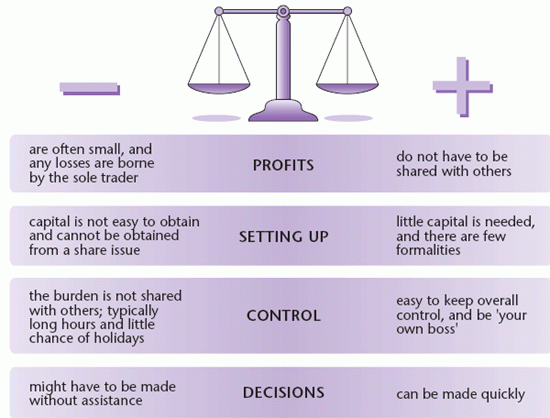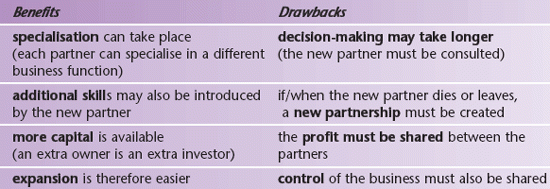Sole Traders and Partnerships
Sole Traders
A sole trader (proprietor) business exists when, even though there may be a number of employees, there is only one owner.

The sole trader form of business ownership tends to occur where:
- personal services are provided
- little capital is needed to start up business
- large-scale production is not a feature.
Partnerships
Partnerships are also unincorporated businesses with unlimited liability. They are traditionally associated with professions such as accountants and lawyers, where capital outlay is small. The minimum number of partners is two and the maximum is (normally) 20. Partners often draw up a written agreement expressing the rights and duties of individual partners with reference to:
- profit-sharing
- amounts of capital to be contributed
- the different business responsibilities of each partner
- regulations concerning the withdrawal of profits by individual partners
- regulations on introducing new partners and the dissolution (ending) of the partnership.
The rules laid down in the Partnership Act 1890 apply where there is no agreement.
- Profits and losses are shared equally.
- Partners’ loans receive 5% interest per annum.
- Each partner has an equal say in how the partnership operates.
A partnership, like a sole trader business, is simple to establish. Other similarities are that the partnership can also keep its financial affairs private, and that the owners still face the drawback of unlimited liability. If a sole trader is thinking of converting to a partnership, the key issues to consider are:

